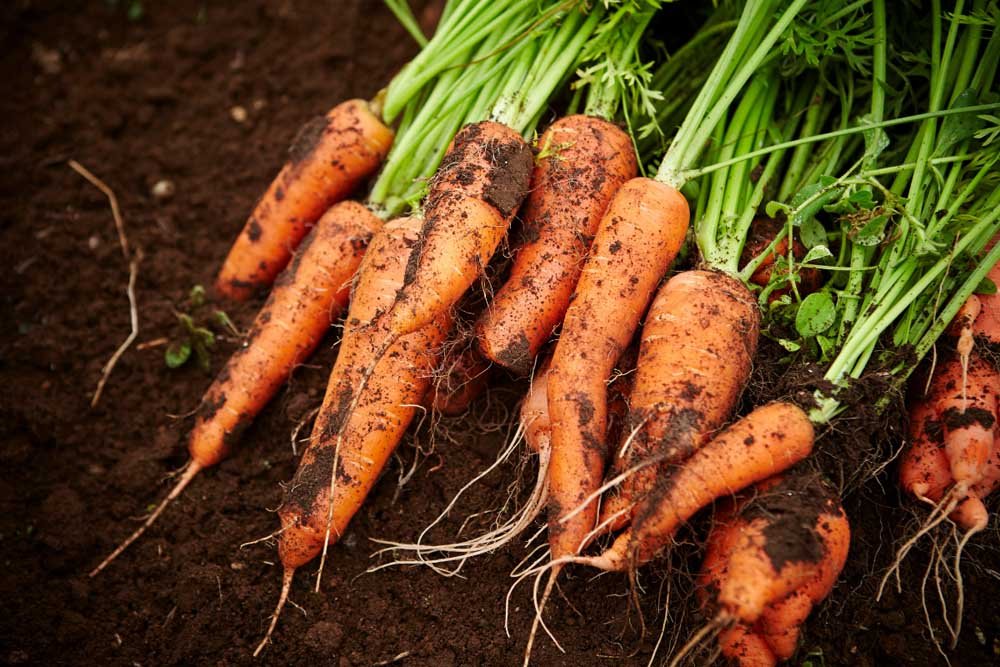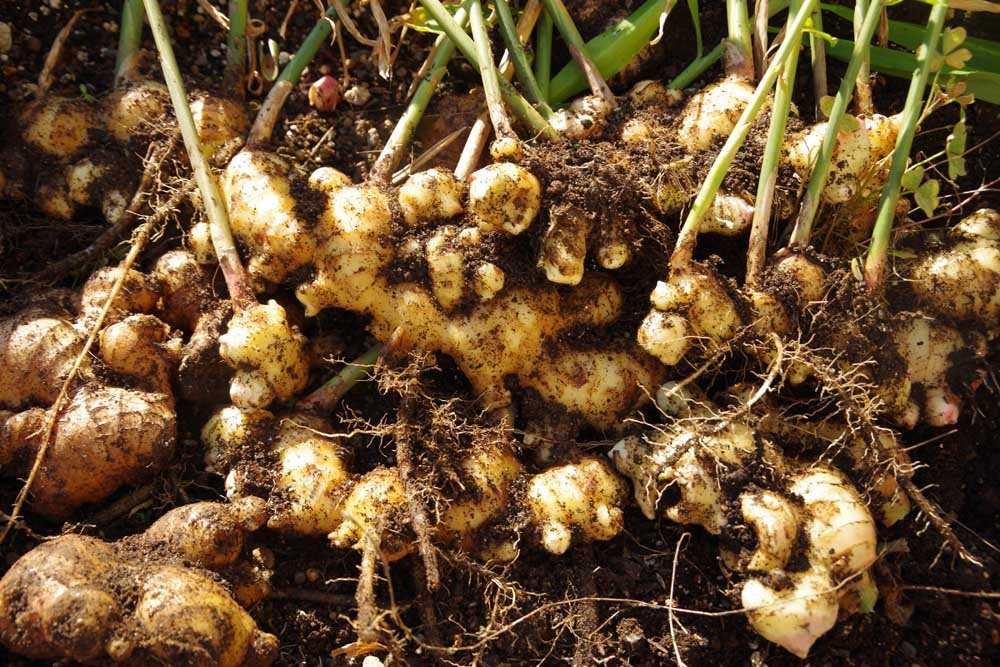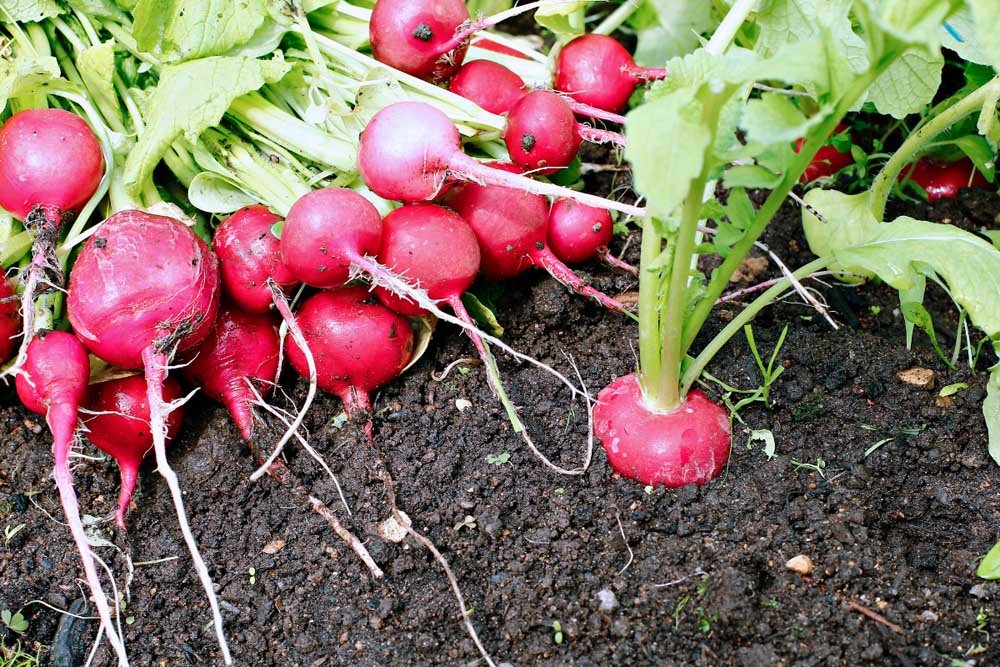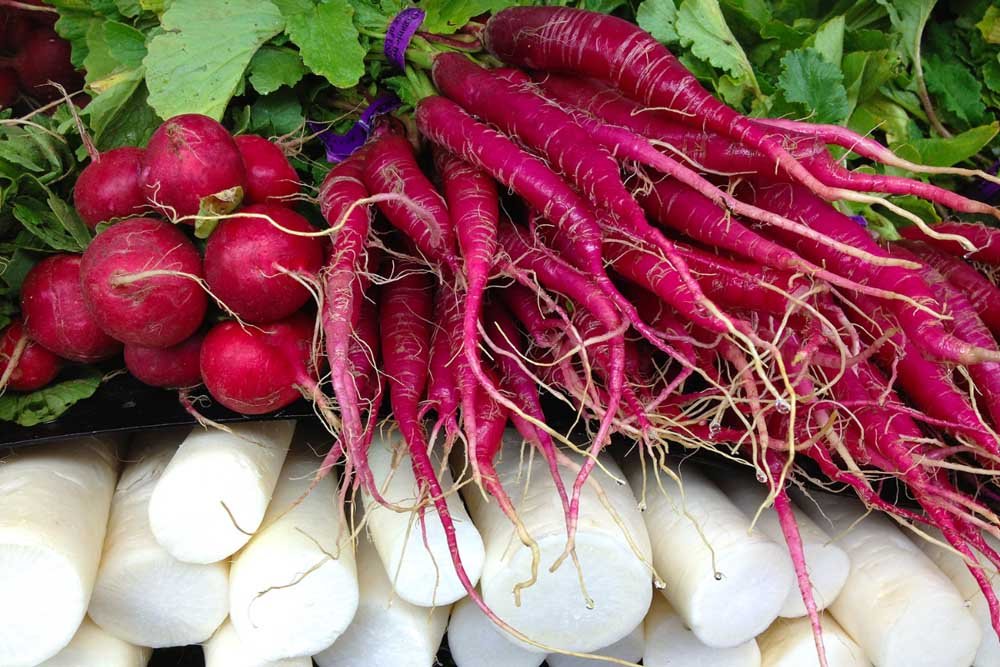Roots play a crucial role in the plant world, serving as a vital source of nutrients and energy. Many of these roots are not only essential for plant survival but also offer significant benefits to our diets. This guide explores various roots that are edible, their nutritional value, culinary uses, and cultural significance, showcasing the diverse ways these underground treasures enrich our lives.
Here are 10 Edible Roots:
1. Potatoes
Nutritional Benefits:
- Potatoes are rich in carbohydrates, providing a primary energy source.
- They are high in vitamin C, potassium, and dietary fiber, especially when eaten with the skin.
Culinary Uses:
- Potatoes can be baked, boiled, mashed, fried, or roasted.
- They form the base for numerous dishes, including mashed potatoes, French fries, potato salad, and more.
Cultural Significance:
- Potatoes are a staple in many cuisines around the world, from European comfort food to Indian dishes.
2. Carrots
Nutritional Benefits:
- Carrots are an excellent source of beta-carotene, which converts to vitamin A in the body.
- They also provide vitamins K, C, and B6, as well as dietary fiber.

Culinary Uses:
- Carrots can be consumed raw, cooked, or juiced.
- They are versatile and used in a variety of dishes, such as carrot soup, salads, and baked goods like carrot cake.
Cultural Significance:
- Carrots are widely used across different cuisines, including European and Asian recipes.
3. Beets
Nutritional Benefits:
- Beets are packed with vitamins and minerals, including folate, manganese, and vitamin C.
- They contain antioxidants and nitrates, which contribute to heart health.
Culinary Uses:
- Beets can be roasted, boiled, pickled, or eaten raw.
- They are commonly used in salads, soups, and as natural food coloring.
Cultural Significance:
- Beets are a traditional ingredient in Eastern European cuisine, especially in dishes like borscht.
4. Sweet Potatoes
Nutritional Benefits:
- Sweet potatoes are high in beta-carotene, vitamins C and B6, and potassium.
- They offer complex carbohydrates and dietary fiber.
Culinary Uses:
- Sweet potatoes can be baked, mashed, roasted, or turned into fries.
- They feature in both savory and sweet dishes, such as sweet potato pie and casseroles.
Cultural Significance:
- Sweet potatoes are integral to Southern U.S. cuisine and also feature prominently in African and Caribbean dishes.
5. Ginger
Nutritional Benefits:
- Ginger is renowned for its anti-inflammatory and antioxidant properties.
- It aids in digestion and helps reduce nausea.

Culinary Uses:
- Ginger can be used fresh, dried, or ground in both sweet and savory dishes.
- It is a staple in Asian cooking, adding flavor to stir-fries, soups, and teas.
Cultural Significance:
- Ginger is a key ingredient in many Asian, Middle Eastern, and African dishes and is valued for its medicinal properties.
6. Turmeric
Nutritional Benefits:
- Turmeric contains curcumin, known for its powerful anti-inflammatory and antioxidant effects.
- It provides iron, manganese, and vitamin B6.
Culinary Uses:
- Turmeric is used fresh or ground to add a vibrant yellow color and distinct flavor to dishes.
- It is a fundamental component of curries and is also used in beverages like golden milk.
Cultural Significance:
- Turmeric is extensively used in Indian, Middle Eastern, and Southeast Asian cooking and is also recognized for its health benefits.
7. Radishes
Nutritional Benefits:
- Radishes are low in calories and high in vitamin C, fiber, and potassium.
- They contain compounds that support digestion and liver health.

Culinary Uses:
- Radishes can be eaten raw, pickled, or cooked.
- They add a peppery crunch to salads and are featured in various dishes.
Cultural Significance:
- Radishes are commonly used in Mexican cuisine, such as in tacos and salsas, and also appear in Japanese and Korean dishes.
8. Turnips
Nutritional Benefits:
- Turnips are rich in vitamin C, fiber, and potassium.
- They are low in calories and high in antioxidants.
Culinary Uses:
- Turnips can be roasted, boiled, mashed, or added to soups and stews.
- Both the root and the greens are edible and nutritious.
Cultural Significance:
- Turnips have been a staple in European diets for centuries and are used in various global cuisines, including Indian and Middle Eastern dishes.
9. Jicama
Nutritional Benefits:
- Jicama is low in calories but high in fiber and vitamin C.
- It has a high water content, which makes it a hydrating snack.
Culinary Uses:
- Jicama can be eaten raw, and often added to salads for its crunchy texture.
- It can also be cooked or used as a substitute for water chestnuts.
Cultural Significance:
- Jicama is commonly used in Mexican cuisine and is enjoyed with lime juice and chili powder.
10. Taro
Nutritional Benefits:
- Taro provides fiber, vitamins E and B6, and potassium.
- It contains antioxidants and supports digestive health.
Culinary Uses:
- Taro can be boiled, mashed, fried, or baked.
- It is a staple in Pacific Islander, Asian, and African dishes.
Cultural Significance:
- Taro is an important food crop in Polynesian cultures and is used in traditional dishes like poi.
Conclusion
Roots that are edible offer a rich array of flavors, textures, and nutritional benefits. Incorporating these roots into your diet not only enhances your meals but also contributes to a more sustainable and health-conscious lifestyle. From the familiar potato to the exotic jicama, these roots are versatile ingredients that bring diversity and nourishment to our plates.
Whether you’re looking to experiment with new recipes or simply appreciate the nutritional value of these roots, exploring the world of edible roots is a rewarding and delicious journey.










